Ray Beldner, founder of stARTup Art Fair, gives an inside look at the art fair world, and what artists should know before committing to exhibit at these events.
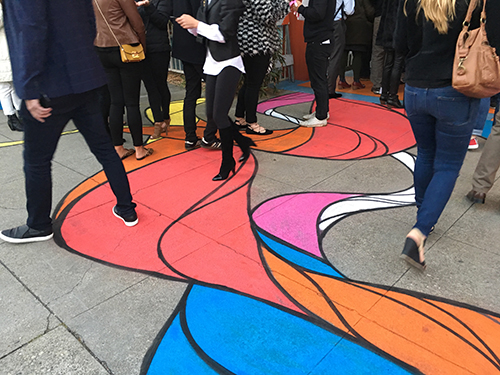
Excitement builds as crowds enter the art fair
The mission of stARTup is to partner with independent artists to help them create and maintain successful careers. stARTup Art Fairs were created in 2015 to bring together talented artists with art professionals and the art loving public in unique settings. The fair was created for artists, by working artists, like myself and my team. I’ve been an exhibiting artist for 25 years and have works in many private and museum collections. I was also a college art professor for 20 years, teaching professional practices to artists. I have a passion for mentoring artists and helping them understand and navigate a very opaque and competitive art world.
From the beginning of stARTup, being very artist-focused, we decided to do things differently. We decided to hold our fairs in hotels rather than impersonal convention halls. This gives artists the opportunity to create their own world in each room. It allows the public to discover their work in a comfortable, intimate setting. We wanted to have a jury of dealers, curators and working artists, so the public would know that the work they were seeing at stARTup was highly vetted and the artists were serious.
At each fair, we typically have about 60 artists exhibiting. We market the fair primarily to art professionals (gallerists, curators, critics, art consultants, collectors). Over the course of a three-day weekend, we’ll get between 4,000-5,000 visitors. About 40% of them are art professionals and the rest are art buyers and art lovers. Reflecting the makeup of the exhibiting artists, who are about 60% female, our attendees are also 60% women, college educated, making six figures, and interested in culture, like museums, galleries, and art fairs.
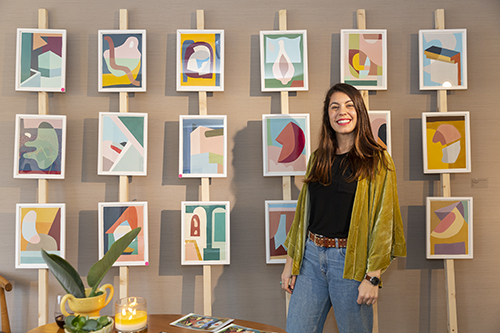
Exhibitor Mido Lee with her display in a hotel room at the fair
The main things I tell artists interested in artist fairs, is to consider these points:
Do Your Due Diligence!
Go carefully over the fair website to learn about the application process, the producers, the venue, attendance, the participation costs and what you get for your money. Who are the event producers? Do they have a background in art? How long has the fair been going, and which artists have done it before? Do they offer anything else besides a wall and some lighting?
I highly recommend that you attend one of their fairs to get a sense of the space and how they arrange it. What kinds of art and artists are there? How busy or slow is it? What’s the vibe? Does it look professional and live up to your expectations? Speak to artists there about their experience as an exhibitor.
If you can’t attend the fair, try to contact some artists who have done the fair and get their impressions. The marketing materials from many art fairs may look good and hit all the key buzzwords, but there is nothing like seeing the event in person or getting first-hand information directly from past exhibitors. Ask the fair organizers to provide you with a list of artists you can contact for their feedback. I get asked all the time to provide artist contacts for other artists considering our fairs. I give them out gladly.
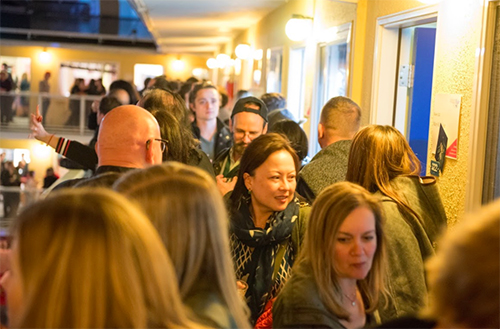
Startup Art Fair crowds are a mix of art professionals and the public
Consider the Fair an Investment in Your Career
Fairs are costly, and there’s a tendency for artists to want to sell enough artwork to make their exhibitor fees back. It’s a good goal, but that may or may not happen during the fair itself. Ask any gallery owner and they will tell you that are fairs are a “slow burn.” It could take weeks to months for their benefits to pay off in terms of direct sales.
It is better to consider the costs of the fair a marketing expense. Think about the fair as a huge networking opportunity. If the fair is a good one and the producers have done their work properly, you should be able to meet more dealers, curators, art buyers, and art consultants in one weekend than you can do on your own in a year or two. In addition, the other huge benefit is connecting to similarly talented artists from other regions of the country. They may become part of your network and support system. Go into the fair with goals of course, but keep your expectations realistic.
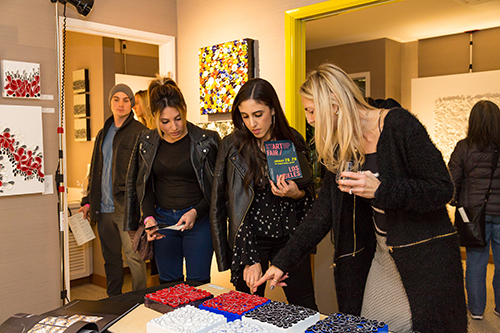
Fair exhibitors should expect to speak about their work to a variety of people who attend
Plan Ahead for Best Results
At each fair, there are artists who sell a lot and those who don’t. Sometimes the same artist will do the fair one year and kill it and the next year, not so much… It’s hard to know why that happens, all thing being equal. Every fair is unique. Each year brings a different set of people and economic circumstances, which may explain some of it.
That being said, the artists I have seen do consistently well at our fairs are not necessarily the ones making the most “accessible” art or the one who are the most gregarious and friendly. The ones who do the best tend to be the most prepared. They usually have planned out the installation and lighting in their room in advance. These artists have created a solid social media and email marketing campaign. They’ve invited not just friends and family to the event, but past collectors and others they have targeted and want to meet at the fair. They have good printed collateral in their rooms like postcards and business cards and they have a way to get people’s information, like a guest book.
In many cases, artists have made appointments with dealers and curators from that city who they want to see their work. They don’t just put of the artwork and sit back and wait–they work it. That doesn’t mean that they are “market-y” or slick operators. On the contrary, many of our most successful artists are often the most laid back and unassuming in person. They differentiate themselves by being prepared, and being able and ready to talk to people in a genuine and passionate way about their work. Those abilities don’t come easily to everyone, but they can be learned and cultivated. In the right environment, it will create more opportunities for people to connect with your work.
Stay Current
In the end, whether you participate in a fair or not, all artists should attend some fairs. Big gallery fairs, small artists fairs and everything in between. It’s important, if only to see what kind of work is out there and to keep up on art world trends. Fairs are definitely not for everyone, but the art fair is not going away anytime soon. It continues to be part of an art market ecosystem that includes galleries, museums, and auctions.



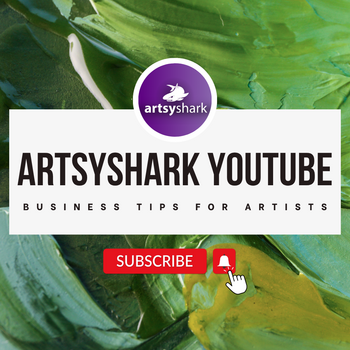
Really good information. Thank you so much!